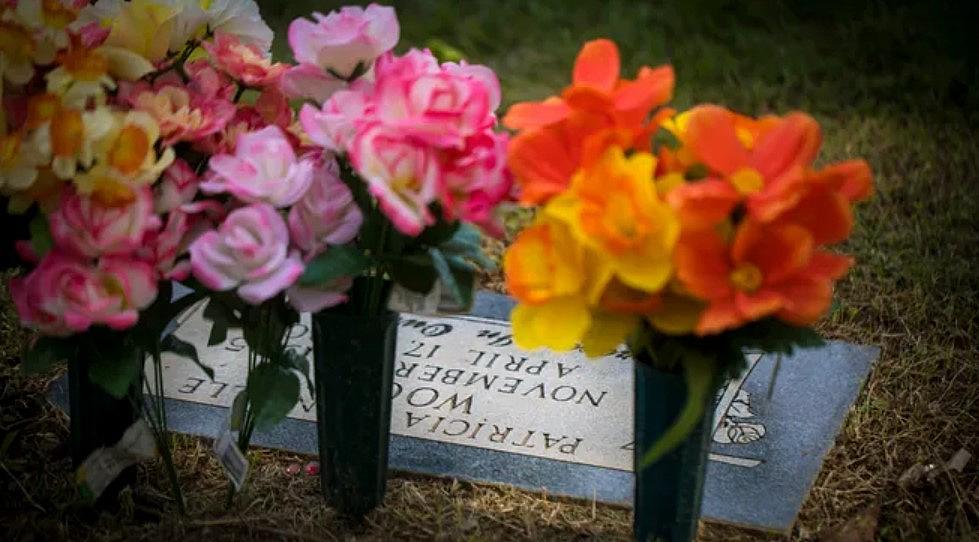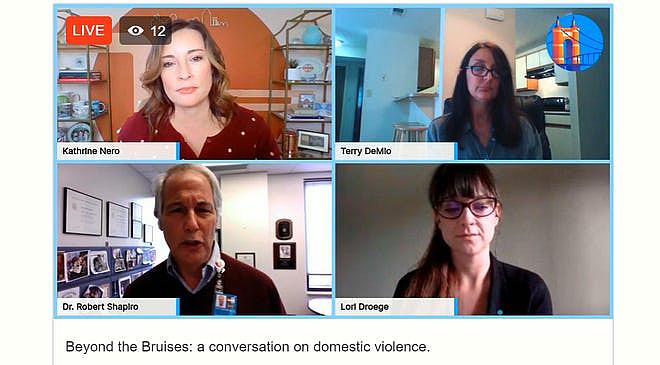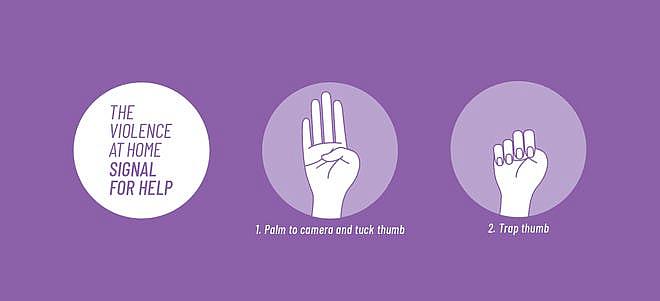Hand-signal rescue of Kentucky girl shows 'power of a bystander'
Other stories by Anne Saker includes:
Part 1: Legacy of domestic violence handed from one generation to the next by Anne Saker
Part 2: How a Cincinnati domestic violence survivor got the help she needed to break the cycle by Cameron Knight
Part 3: Domestic violence: Teaching kids skills to stay safe in relationships, prevent abuse by Terry DeMio
What are adverse childhood experiences? Seeing domestic violence is one of them. by Anne Saker
How The Enquirer uncovered family histories of domestic violence in Hamilton County by Quinlan Bentley
Watch: Enquirer hosts conversation on domestic violence
Murder case in Enquirer's domestic-violence series ends with 15-to-life prison sentence

The Enquirer hosted a live event to discuss how to expand the solutions described in the news organization's in-depth report last month about domestic violence in the Cincinnati region
Cincinnati Enquirer
The Kentucky rescue this week of a teenage girl asking for help through a hand signal tells “the amazing story of the power of a bystander,” a Covington violence prevention expert said during a Facebook Live event Thursday with The Enquirer.
“We have such power to impact other people’s lives,” said Lori Droege, director of prevention and public education at the Ion Center, formerly the Northern Kentucky Women’s Crisis Center.
The rescue shows “how we can all do our part to help kids to identify those kids who seem to be at risk,” said Dr. Robert Shapiro, director of the Mayerson Center for Safe and Healthy Children at Cincinnati Children’s Hospital Medical Center.
The Enquirer's Kathrine Nero, upper left, led a Facebook Live conversation Nov. 11 about domestic violence, adverse childhood experiences and violence prevention. Also on the conversation were, clockwise, Enquirer reporter Terry DeMio, Lori Droege, director of prevention and public education at the lon Center, and Dr. Robert Shapiro, director of the Mayerson Center for Safe and Healthy Children at Cincinnati Children's Hospital Medical Center. The Enquirer/Anne Saker
Droege and Shapiro discussed the hand-signal rescue during the Facebook Live event that The Enquirer hosted to follow its in-depth reporting last month on domestic violence in Hamilton County.
The Enquirer’s report found that addressing domestic violence means confronting the adverse childhood experiences that inflict trauma that lasts into adulthood. The report also found that violence prevention programs in school have reduced dating and relationship violence among teenagers.
“We don’t want to put the responsibility of this on kids. That’s not what childhood is,” said Shapiro. “What we want to do is give them tools to be safe. … We can do this. It’s not easy. It requires communication to help schools and communities to implement change.”
What is the hand signal for help and how did it get started
The hand-signal rescue occurred Nov. 4 near London, Kentucky, in Laurel County, about 85 miles south of Lexington. A 16-year-old girl in a car on Interstate 75 flashed a hand signal for help – thumb against the palm, fingers folded over. Police said another driver recognized the distress sign from the social media site TikTok and called 9-1-1.

Police stopped the car to find a 61-year-old North Carolina man at the wheel and the teenager in the back seat. The girl’s parents in North Carolina had reported her missing two days before. The driver was arrested and charged with unlawful imprisonment.
Droege said she had never heard of the hand signal before Monday. But she likened it to tactics in bars where someone who needs help can ask for a certain drink - the angel shot. "But any tool is good in a situation when we need help and we can't provide that help to ourselves."
The Canadian Women’s Association, a nonprofit advocacy organization, developed the signal and released it in April 2020, said Andrea Gunraj, the group’s vice president of public engagement. The group used Facebook, Twitter, LinkedIn and YouTube to spread the word, she said, and did not know about TikTok.
“We launched in April, and by July, in Canada, one of three people knew about the signal for help,” she said. Now, the message has lapped over in other social media channels, and the group knows of the signal’s appearance in at least 70 countries, Gunraj said.
“I think it’s speaking to something important at a time when people were really thinking about this,” Gunraj said. “My goodness, what does it mean to be stuck at home, and stuck at home with an abuser?”
In developing the symbol, she said, the goal was to find a one-handed way to ask for help that did not conflict with American Sign Language.
“No symbol is perfect,” Gunraj said, “but it’s important here to realize that this is a signal for help. It’s not signifying the kind of help. It means, I need you to check in with me, and let me know you can hear what I need.”
[This article was originally published by Cincinnati.com.]

